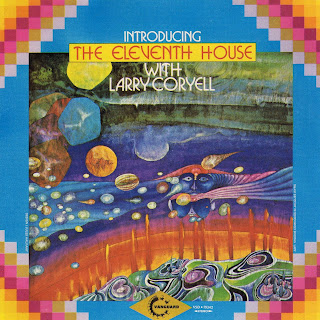
Although not as well-known in the West as his countrymen Adam Makowicz, Tomasz Stanko, and Michal Urbaniak, Wróblewski has been one of the dominant figures in Polish jazz since the late '60s. Wróblewski played clarinet, tenor sax, and piano while studying agriculture at a Polish technical college; his first professional experience was with Krzysztof Komeda in 1956. Beginning in 1958, he studied at the Higher School of Music in Krakow. That year, he was chosen by George Wein and Marshall Brown to play in the International Youth Band, which performed at the Brussels World's Fair and the Newport Jazz Festival. In 1960, he played and recorded with Stan Getz and a group of Polish musicians; the resulting album was issued as Jazz Jamboree '60.
Wróblewski led many Polish jazz groups during the 1960s, including the Jazz Outsiders and the Polish Jazz Quartet. He played some free jazz, but -- while occasionally prone to experimentation -- he remained attached to more traditional forms. Wróblewski formed the Polish Radio Jazz Studio orchestra in 1968 and led the band until 1977; it included most of the country's top jazz players at one time or another. Around that time, Wróblewski was also vice president and later president -- of the Polish Jazz Society. He led several of his own ensembles during the '70s, including Mainstream (co-led with Wojciech Karolak), Chalturnik (an experimental aggregate), and his quartet.
:::Review by allmusic:::
Quite a groovy little album -- big band work from Polish saxophonist Jan Ptasyn Wroblewski, done with the same hip flair and sense of soul as similar projects for MPS at the time! There's a sound here that's ambitious, but not overly academic -- a bold statement in music that's filled with strong colors, firm tones, and a confident direction -- played to perfection by a group that includes Wroblewski on tenor, Tomasz Stanko on trumpet, Michael Urbaniak on violin, Zbigniew Namyslowski on alto sax, and Adam Makowicsz on Fender Rhodes. Tracks are longish, but very well constructed -- so that they don't run on too much, and have a tightness that matches the spirit of the set. Titles include "Determinant One", "Quotation From Myself", "Magma", "Seaweed Sale", and "No Fade Out".
:::Review by Dusty Groove America, Inc.:::
Jan Ptaszyn Wróblewski - Sprzedawcy Glonów (1973)
Credit
1. Seaweed Sale 6:18
2. No Fade Out 6:04
3. Quotation From Myself 9:09
4. Determinant One 9:50
5. Jan Szpargatol Mahawisnia 6:26
6. Magma 5:18
Credits
Studio Jazzowe P.R. - directed by Jan 'Ptaszyn' Wróblewski
Tomasz Szukalski - tenor sax, soprano sax, bass clarinet (1, 3-6)
Michał Urbaniak - violin (1), soprano sax (2)
Zbigniew Namysłowski - alto sax, flute (1-6)
Tomasz Stańko - trumpet (2, 3, 4, 6)
Adam Makowicz - Fender electric piano (4)
Marek Bliziński - guitar (1, 4, 5)
Jan Ptaszyn Wróblewski - tenor saxophone (1, 2, 4, 6), conductor
Wojciech Karolak - Hammond organ (1, 5)
Włodzimierz Nahorny - alto sax, flute (1-6)
Zbigniew Seifert - alto sax (2,3), violin (6)
Stanisław Mizeracki - trumpet (1,2,3,4,6);
Bogdan Dembek - trumpet (1,3,4,5,6)
Bogusław Skawina - trumpet (2)
Laco Deczi - trumpet (5)
Józef Grabarski - trumpet (1)
Stanisław Cieślak - trombone (1-6)
Andrzej Brzeski - trombone (1,2,3,4,6)
Andrzej Piela - trombone (2,3,5,6)
Jan Jarczyk - trombone (1,4,5)
Dariusz Filiochowski - French horn (1,3,5,6)
Dariusz Szewczyk - French horn (4)
Zdzisław Piernik - tuba (2,3,5,6)
Janusz Muniak - tenor sax, soprano sax, flute (2,3,5,6)
Waldemar Kurpiński - baritone sax, clarinet (1,3,4,5,6)
Andrzej Trzaskowski - piano ( 6)
Paweł Jarzębski - bass (1,2,4,5)
Bronisław Suchanek - bass (3,5,6)
Janusz Stefański - drums (2,3,5,6)
Czesław Bartkowski - drums (1,4), percussion (5)
Kazimierz Jonkisz - percussion (1,3,4,5,6)








































